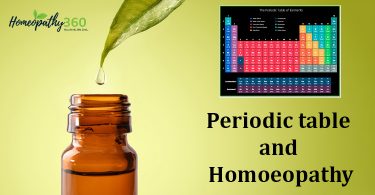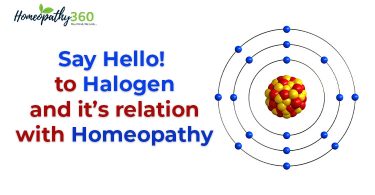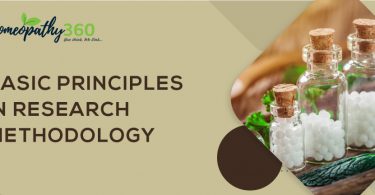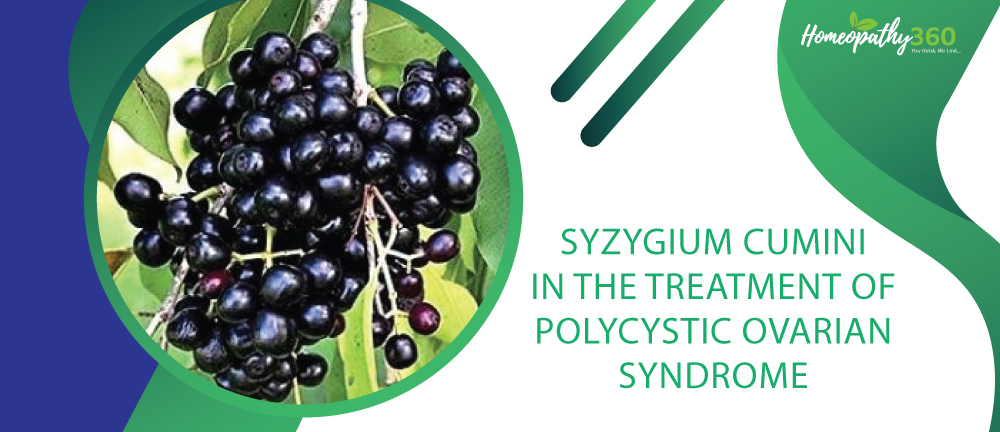
ABSTRACT
Polycystic Ovarian Syndrome is commonly affecting as many as 1 out of 15 women. In modern system, the line of management is usually by HRT (hormone replacement therapy) or surgery. Community based studies using Rotterdam criteria among the reproductive age group women have demonstrated varied prevalence features in Asian countries ranging from 2% to 7.5%.
KEYWORDS
Polycystic ovarian syndrome, Syzygium cumini
INTRODUCTION
PCOS, increased during the reproductive age as an endocrine disorder which affects one in each 15 women worldwide. The prevalence rate of obesity is high among the female with PCOS.
Polycystic ovary syndrome was known before as Stein-Leventhal syndrome. The disorder is related to series of disturbances in the hypothalamic –pituitary –ovarian axis and with androgen –creating tumors to difficulty of getting pregnancy.
The disease occurs during the reproductive age as increases among the adolescent females and the young women and may be occur at birth but does not cause symptoms until puberty 1
There are many causes of irregular periods but PCOS is the most common cause. About 7% of the overall population, about 25% of young fertile women and over 50% of women with irregular periods have PCOS. If you have menstrual periods less frequently than every 35 days or more than 5 weeks between periods, you very well may have PCOS. Over 90% of women with PCOS also have some clinical evidence of androgen excess, including excess hair growth above their upper lip, chin, breasts, or abdomen, or acne. Most of these symptoms will start in the teen years. Certain ethnic groups with overall fewer body hair follicles don’t exhibit this, e.g., women of Asian descent. Specific blood tests can help identify elevated male hormones (androgens) in women.
Many women with PCOS have some degree of insulin resistance, that is, elevated insulin with normal glucose levels, prediabetes or true diabetes.2
What causes PCOD:
Raised levels of Testosterone – Androgens or “male hormones,” although all women make small amounts of androgens…Higher than normal androgen levels in women can prevent the ovaries from releasing an egg (ovulation) during each menstrual cycle. Excess androgen produced by the theca cells of the ovaries, due either to hyperinsulinemia or increased luteinizing hormone (LH) levels.
Raised levels of Luteinizing Hormone (LH) – Due to increased production from the anterior pituitary. This stimulates ovulation but may have an abnormal effect on the ovaries if levels are too high.
Low levels of Sex Hormone-Binding Globulin (SHBG) – A protein in the blood, which binds to testosterone and reduces the effect of testosterone.
Raised levels of Prolactin – Hormone that stimulates the breast glands to produce milk during pregnancy.
High levels of Insulin (a hormone that helps convert sugars and starches into energy) If you have insulin resistance, your ability to use insulin effectively is impaired, and also your pancreas has to secrete more insulin to make glucose available to cells (so, hyperinsulinaemia) Excess insulin might also affect the ovaries by increasing androgen production, which may interfere with the ovaries’ ability to ovulate 3
Signs and symptoms:
. Irregular periods or no periods at all
. Difficulty getting pregnant (because of irregular ovulation or failure to ovulate)
. Excessive hair growth (hirsutism) – usually on the face, chest, back or buttocks
. Weight gain
. Thinning hair and hair loss from the head
. Oily skin or acne 4
PREDISPOSING FACTORS
- OBESITY
- Obese excess fat can make insulin resistance worse
- About 40% obese people having PCOD.
- HYPERINSULINEMIA
- Insulin resistance is key factor in pathogenesis in PCOD.
- When a woman is insulin resistant, her fat cell doesn’t respond normally to the insulin in the blood stream and cause weight gain.
- Insulin leads to suppression of liver production of sex hormone binding globulin, an important
Determinant of free androgen index.
- HYPERSECRETION OF LH
- The risk of infertility and recurrent pregnancy loss is raised in these patients.
- Hypersecretion of LH causes stimulation of the ovarian theca cells. These cells are not able to aromatize to oestrogen, leading to decreased oestrogen levels and consequent anovulation.
D) INCREASE ANDROGEN
- It generally reduces hepatic production and secretion of sex hormone binding globulin.4
How is PCOD diagnosed?
Typical medical history: Regular/ irregular menstrual cycles, heavy/scanty menstrual flow, the need to take hormonal tablets (progestins) to induce a period, etc.
Physical Signs: Often obese and may have hirsutism, (excessive facial and body hair) as a result of the high androgen levels.
Diagnosis can be confirmed by vaginal Ultrasound (USG pelvis): Shows that both the ovaries are enlarged; the bright central stroma is increased, and there are multiple small cysts in the ovaries. These cysts are usually arranged in the form of a necklace along the periphery of the ovary
Blood levels of hormones:
High LH (luteinizing hormone) level; and a Normal FSH level (follicle stimulating hormone) i.e. a reversal of the LH: FSH ratio, which is normally 1:1.
Elevated levels of androgens (a high dehydroepiandrosterone sulfate (DHEA-S) level);
Fasting cholesterol and triglyceride levels;
Glucose tolerance test.
Diet for PCOD:
- Diet should be dominated with lots of fruits and vegetables on a daily basis. Avoid dairy products as much as possible.
- Lean cuts of chicken and fish can be taken. But avoid red meat.
- Hydrate yourself well by having a minimum of 2-3 liters water/day, coconut water, buttermilk, vegetable soups, and smoothies. Avoid aerated drinks and sugary foods.
- Eat unsaturated fats and delete saturated and hydrogenated fats from your diet. Always check the label of the product while buying them.
- Binge on whole wheat products like wheat pasta, wheat poha and avoid maida, suji
- Brown rice in and white rice should be out of your diet. Red rice is also found to be rich in antioxidants which can be used as a substitute for white rice.
- Include natural herbs in your diet like flax seeds, methi seeds, coriander, cinnamon.
- Include millets like barley, ragi, quinoa, and oats. They are known to cool your body.
- Say Yes to walnuts, almonds and no to cashews
Whole pulses like skinned green moong dal, chana dal, yellow moong dal, whole pulses to be included in various preparations. 3
HOMOEOPATHIC APPROACH
Syzygium cumini.
Syzygium cumini, commonly known as Malabar plum, Java plum, or black plum, is an evergreen tropical tree in the flowering plant family Myrtaceae. It is native to the Indian Subcontinent, adjoining regions of Southeast Asia, China and Queensland. The name of the fruit is sometimes mistranslated as blackberry, which is a different fruit in an unrelated order. Syzygium cumini has been spread overseas from India by Indian emigrants and at present is common in tropical former British colonies.
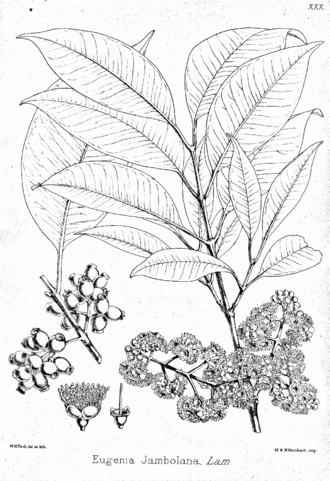
The seed of the fruit is used in various alternative healing systems like Ayurveda,Unani and Chinese medicine.
The extract of the fruit and seeds are found be effective against hyperglycemia in diabetic rats.
It has a high source in vitamin A and vitamin C .5
A study on Syzygium cumini skeels improves metabolic and ovarian parameters in female obese rats with malfunctioning hypothalamus-pituitary-gonadal axis.The aim of this study was to assess the effects of a hydroethanolic extract from Syzigium cumini leaves in female reproductive impairments present in the obesity model of neonatal L-monosodium glutamate injection because, Obesity is a chronic and multifactorial disease characterized by increased adipose tissue and in females, obesity leads to reduced ovulation and lower chances of conception in diseases like polycystic ovary syndrome, making it important to characterize complementary medicine to attenuate such deleterious effects.
The methods they followed was the Newborn Wistar rats received saline (CTRL) or L-monosodium glutamate 4mg/g BW (MSG). At 90days of age, CTRL and some MSG rats received saline, while others received hydroethanolic extract of S. cumini leaves (HESc 500mg/kg/day, MSG-Syz group) for 30 consecutive days. Estrous cycle was determined by daily vaginal washes. On days 26 and 28 of treatment, oral glucose tolerance test and blood collection were performed for biochemical assessment. At the end, animals were euthanized during estrous phase; blood was collected to measure sex hormones and organs collected for weighing and histological evaluation.
The results were MSG-Syz showed reduced Lee Index, retroperitoneal fat pads and restored gluco-insulin axis. Moreover, HESc treatment reduced serum cholesterol levels when compared to MSG. Treatment with HESc did not restore the oligociclicity observed in obese animals, though MSG-Syz reestablished ovarian follicle health back to CTRL levels, with proliferating primordial follicles – these effects were followed by a decrease on periovarian adipocyte area.
So they Concluded, as a whole, this work shows for the first time that the hydroethanolic extract of S. cumini leaves produces beneficial effects on the metabolic parameters of female MSG-obese rats, without improving their oligocyclicity. Even so, HESc administration improved ovarian follicle health – an effect in some measure due to reduction of periovarian adipocytes. Not less important, this is the first report to show the PCOS-like features of MSG-obese rats can be at least partially reversed by pharmacological treatment, providing novel evidence that, without a functioning HPG axis, metabolic improvement is ineffective for estrous cyclicity, but critical for follicle health. Future perspectives include longer or earlier treatments, which may result in greater benefits on reproductive parameters of MSG-obese female rates .5
Syzygium jambolanum, Jambol Seeds:
Enlexing, active principle. Has an immediate effect of increasing the blood sugar, glycosuria results. A most useful remedy in diabetes mellitus. No other remedy causes in so marked degree the diminution and disappearance of sugar in the urine. Prickly heat in upper part of the body; small red pimples itch violently. Great thirsts, weakness, emaciation. Very large amount of urine, specific gravity high. Old ulcers of skin. Diabetic ulceration. The seeds powdered, ten grains three times a day .6
Syz. j. is a native of India. It has an edible fruit, the powdered stones of which have a popular use in India.
SYZYGIUM CUMINI:
- Has an immediate effect of increasing the blood sugar.
- Prickly heat over upperpart of body
- Small red pimples itch violently.
- Great weakness.
- The seeds powdered, ten grains three times a day. 6
REFERENCE
1) A En.wikipedia.org. 2022. Ovary – Wikipedia. [online] Available at: https://en.wikipedia.org/wiki/Ovary [Accessed 26 June 2022].
2) Joshi B, Mukherjee S, Patil A, Purandare A, Chauhan S, Vaidya R. A cross-sectional study of polycystic ovarian syndrome among adolescent and young girls in Mumbai, India. Indian journal of endocrinology and metabolism. 2014 May;18(3):317..
3) Askdrshah.com. 2022. Polycystic Ovarian Syndrome (PCOS/PCOD): Homeopathy Treatment, Causes, Remedies and Symptoms. [online] Available at: https://www.askdrshah.com/pcod.aspx [Accessed 26 June 2022].
4) Badawy A, Elnashar A. Treatment options for polycystic ovary syndrome. International journal of women’s health. 2011;3:25.
5) Balakrishna GV, Sowmya K, Bollapalli VR, Rao MR. Anti-allergic studies of Alibizzia Lebbeck and Syzygium cumini (L. Syzygium gambolana). J Micbiol Bitechnol. 2016;1(1):000103.
6) Syzygium jambolanum, Jambol seeds. Syzygium jambolanum, Jambol Seeds. | Henriette’s Herbal Homepage. (n.d.). Retrieved June 26, 2022, from https://www.henriettes-herb.com/eclectic/boericke/syzygium.html .
ABOUT AUTHOR
DR LAKSHMIPRIYA B MENON
PG scholor part 1 2020-21 batch
Department of repertory , FMHMC
DR LAKSHMI P
BHMS



